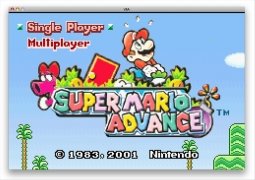
- #Hyperimage app for mac how to#
- #Hyperimage app for mac pro#
- #Hyperimage app for mac software#
- #Hyperimage app for mac professional#
- #Hyperimage app for mac mac#
The iPad Air was thinner and lighter than previous iPads, and that’s where things maintained for a couple of generations.
#Hyperimage app for mac pro#
There was no iPad Pro yet, but there was an iPad mini. The iPad Air came our in November 2013 and completely replaced the iPad line. The word Air has had a similar journey in the iPad lineup. Looks a lot like a 2017 iPad Pro… The Air and the iPad Lineup
#Hyperimage app for mac professional#
Now, the MacBook serves as the thin and light machine with compromises, the Air is the mainstream consumer/prosumer machine, and the MacBook Pro straddles prosumer and professional customers. Then Apple brought back the MacBook in a thinner, lighter form-factor, and the Air became its heavier, slower budget sibling. Then, it evolved into a replacement for the white plastic MacBook, serving as the only alternative to the MacBook Pro. For a time, it existed in its own category for early adopters. Over the years, the MacBook Air had different places in Apple’s product lineup. It made compromises it had almost no traditional ports but it was cool. No one had seen a computer so thin or light before.

Steve Jobs held up a manilla envelope, the type you might see for old interdepartmental messages, and pulled a computer out of it. It was one of the most memorable product reveals in recent history, even compared to the much-anticipated iPhone announcement from the year before. The MacBook Air and a New Product Category Steve Jobs at MacWorld 2008
#Hyperimage app for mac mac#
This approach remained fairly consistent over the next few year and saw Apple through the Intel transition, with the Mac mini replacing the eMac in the consumer category. The laptop line was already beginning to grow a little confusing, with the smaller PowerBook targeting a humbler audience than those who would buy the larger models. If you were to try to grid out their products in 2004, it might look similar to this: The four-quadrant grid was never going to last forever, especially with the growing prosumer market and Apple choosing to move beyond computers as their primary hardware products. Over the years, Apple’s customer base has grown considerably, and their business model has evolved. Of course, there were multiple choices in each category, but it was clear to potential customers which machine was for whom. The intended audiences were clear, and everything from the components to the industrial design reflected this approach. At the 1998 MacWorld Expo, he shared a simplified product grid that would serve as the foundation for Apple’s product lineup for several years. When Steve Jobs returned to Apple in the late 90s, he found a product line that was too confusing for most consumers, so he simplified things.

This is an old story now, but running back across it makes me think about how hard it is to get people who struggle with technology to trust tech companies at all when supposedly trusted resources do things like this.Īn Abridged History of Apple Product Names “Consistent with their training, Office Depot and OfficeMax store employees read each of the Initial Checkbox Statements once the program began and selected the corresponding box based on the consumer’s response.”

#Hyperimage app for mac how to#
“Defendants trained Office Depot and OfficeMax store employees on how to utilize the PC Health Check Program and instructed store employees to check any of the Initial Checkbox Statements that applied based on the consumer’s responses,” the complaint said.
#Hyperimage app for mac software#
In some cases, store employees checked the boxes themselves, guaranteeing that the software would produce a warning, the FTC complaint said. Some later versions of the software did some “limited optimizations… such as removing junk files and reconfiguring certain settings.”Īfter displaying fake scan results to consumers who had checked any of the four boxes, PC Health Check “also displayed a ‘view recommendation’ button with a detailed description of the tech services consumers were encouraged to purchase-services that could cost hundreds of dollars-to fix the problems.” Office Depot “tech experts” told customers that PC Health Check would “optimize” their computers, but in reality the software “did not run complete diagnostics on consumers’ computers,” the FTC said. Ars Technica: Office Depot Rigged PC Malware Scans to Sell Unneeded $300 Tech Support


 0 kommentar(er)
0 kommentar(er)
